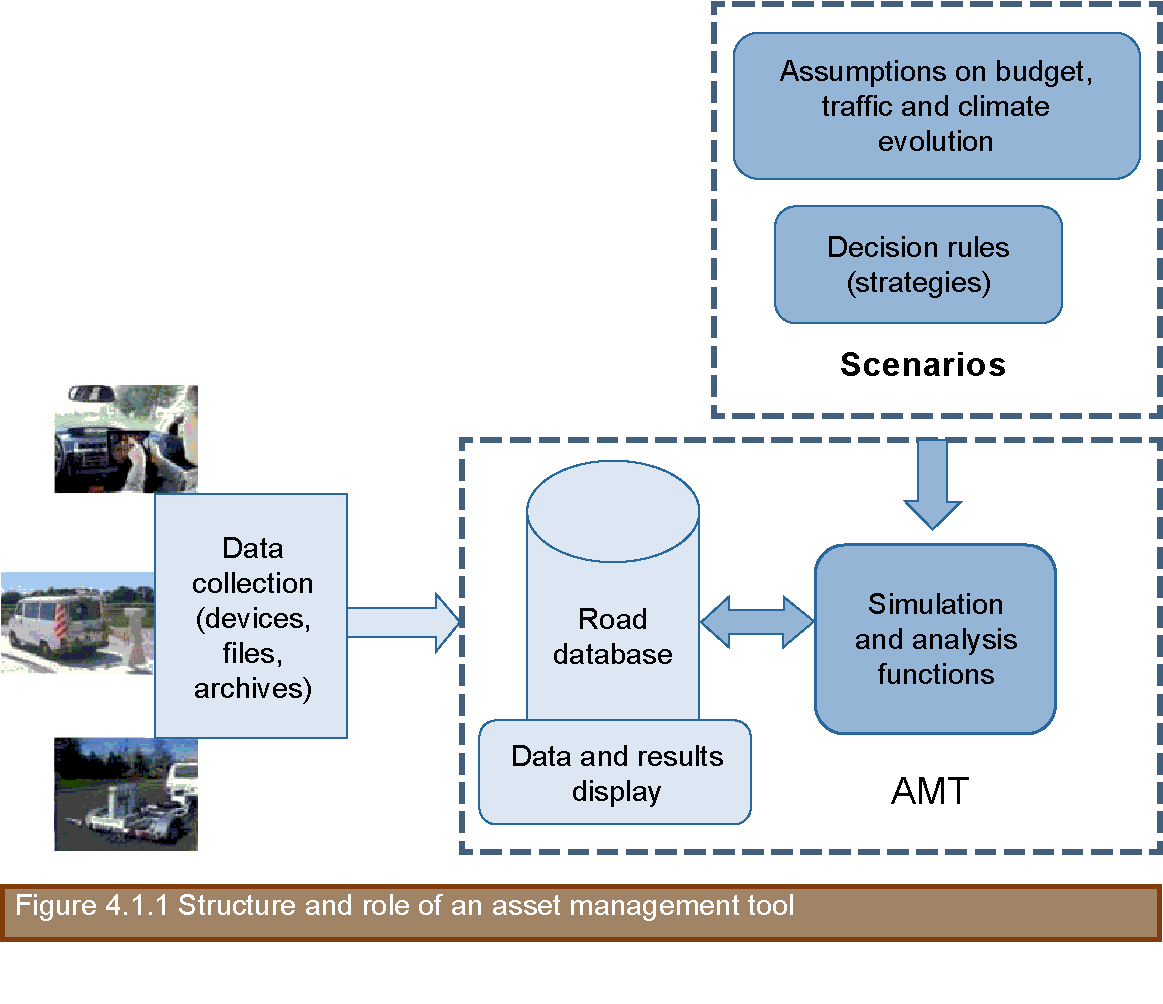
Asset Management Manual
A guide for practitioners!

Asset Management Manual
A guide for practitioners!
An AMT is professional software that is used by a road organization to apply a rational and efficient approach to asset management. An AMT always has two types of inputs:
Data that describe the transportation asset, its components (pavements, bridges, engineering structures, equipment, etc.), its nature and characteristics (drawings, design, construction reports, etc.), its condition (strengths, distresses, etc.) and other attributes that apply to it (traffic, climate, etc.)
The rehabilitation, maintenance, and operation scenarios that are considered by the road organization, including assumptions about external factors (budget, traffic, climate change, etc.) and their decided rules
An AMT helps road organizations perform various analyses, run several simulations, test a number of management scenarios, and finally decide which strategies are the most appropriate to meet their objectives (Figure 15.1). Basically, the AMT should meet two requirements:
The structure of the AMT (Figure 4.1.1) should reflect the procedures of the asset management approach described in the previous chapters. Because these procedures are progressively completed from one maturity level to the next one, the AMT should be modular software that can be enhanced by new modules or expanded functions as the road organization progresses from one maturity level to the next.

An AMT should never force or limit in any way the choices or decisions made by the road organization. The AMT should help staff to consider all realistic options and strategies in managing assets in the short, medium and long terms.